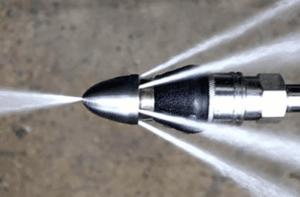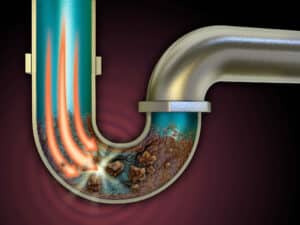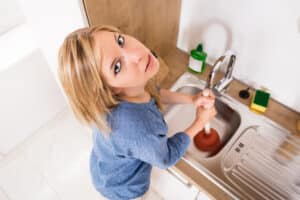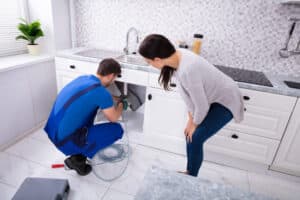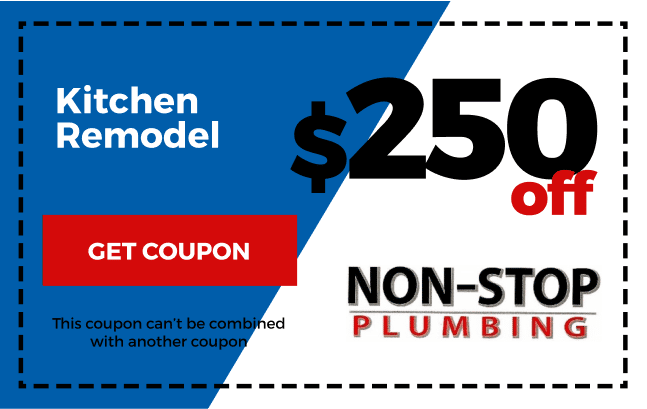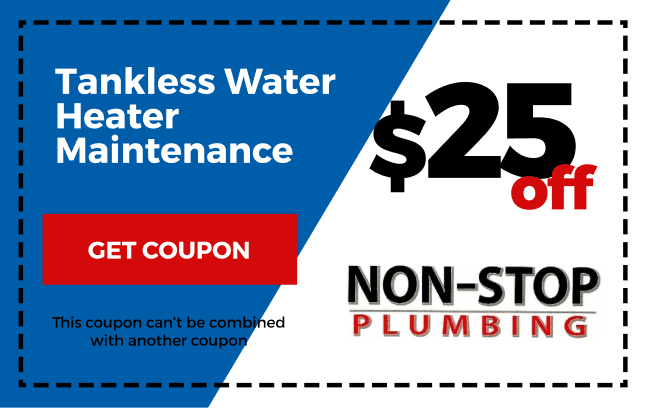Plumbing issues can be a real pain, and the last thing you want is to be caught off-guard when a problem arises. From leaky faucets to clogged drains, plumbing problems can range from minor annoyances to serious issues that require immediate attention. As a homeowner, it’s important to be aware of the common plumbing problems that can occur and know how to fix them. In this article, we’ll discuss five of the most common plumbing problems and provide you with some tips on how to fix them. Whether you’re a seasoned DIYer or a novice, these tips will help you tackle your plumbing problems with ease and save you time and money in the process. So, let’s dive in and take a closer look at these common plumbing issues and how to fix them!
Leaky Faucets and How to Fix Them
Leaky faucets are one of the most common plumbing problems that homeowners face. Not only are they annoying, but they can also lead to higher water bills if left unfixed. The good news is that fixing a leaky faucet is often a simple DIY job that can be done in just a few minutes.
The first step in fixing a leaky faucet is to turn off the water supply to the faucet. This can usually be done by turning off the valve under the sink. Next, remove the handle on the faucet and use a wrench to remove the nut that holds the stem in place. Once you’ve removed the stem, check the O-ring and washer for any signs of wear or damage. If either of these parts is damaged, replace them with new ones. Finally, reassemble the faucet and turn the water supply back on.
If you’re still experiencing a leaky faucet after following these steps, it may be time to replace the entire faucet. A new faucet can be purchased at your local hardware store and installed using the same steps outlined above.
Clogged Drains and How to Clear Them
Clogged drains are another common plumbing problem that can be a real headache. The good news is that there are several DIY methods that can be used to clear a clogged drain.
One of the easiest and most effective methods for clearing a clogged drain is to use a plunger. Simply place the plunger over the drain and pump it up and down vigorously. This will create suction that can help to dislodge the clog. If the clog is particularly stubborn, you may need to repeat this process several times.
Another method for clearing a clogged drain is to use a drain snake. A drain snake is a long, flexible tool that can be inserted into the drain to break up and remove the clog. To use a drain snake, simply insert it into the drain and twist it back and forth until the clog is dislodged.
If neither of these DIY methods works, you may need to call in a professional plumber to clear the clog. They will have specialized tools and equipment that can be used to remove even the most stubborn clogs.
Running Toilets and How to Stop Them
A running toilet is not only annoying, but it can also lead to higher water bills. The good news is that fixing a running toilet is often a simple DIY job that can be done in just a few minutes.
The first step in fixing a running toilet is to identify the cause of the problem. In many cases, the problem is caused by a faulty flapper valve. The flapper valve is the part of the toilet that controls the flow of water from the tank to the bowl. If the flapper valve is not sealing properly, water will continue to flow from the tank to the bowl, causing the toilet to run.
To fix a running toilet caused by a faulty flapper valve, simply turn off the water supply to the toilet and remove the lid from the tank. Next, flush the toilet to drain as much water from the tank as possible. Once the tank is empty, remove the flapper valve and replace it with a new one. Finally, turn the water supply back on and test the toilet to make sure it’s no longer running.
If the problem persists, it may be caused by a faulty fill valve or a problem with the float. In these cases, it’s best to call in a professional plumber to diagnose and fix the problem.
Low Water Pressure and How to Increase It
Low water pressure can be a frustrating problem that can make simple tasks like washing dishes or taking a shower much more difficult. The good news is that there are several DIY methods that can be used to increase water pressure.
The first step in increasing water pressure is to check the water pressure regulator. The water pressure regulator is a valve that controls the flow of water into your home. If the regulator is set too low, it can cause low water pressure. To adjust the regulator, simply turn the screw in a clockwise direction to increase the pressure.
Another common cause of low water pressure is a clogged faucet aerator. The aerator is the small screen at the end of the faucet that helps to regulate the flow of water. Over time, this screen can become clogged with debris, which can restrict the flow of water. To clean the aerator, simply remove it from the faucet and rinse it under running water.
If neither of these DIY methods works, the problem may be caused by a leak in the plumbing system or a blockage in the main water line. In these cases, it’s best to call in a professional plumber to diagnose and fix the problem.
Burst Pipes and How to Prevent Them
Burst pipes are a serious plumbing problem that can cause extensive damage to your home. The good news is that there are several steps you can take to prevent burst pipes from occurring.
The first step in preventing burst pipes is to insulate your pipes. This can be done using foam insulation sleeves that can be purchased at your local hardware store. Insulating your pipes will help to keep them warm, which can prevent them from freezing and bursting during the winter months.
Another way to prevent burst pipes is to keep your home’s temperature above 55 degrees Fahrenheit. This will help to keep your pipes warm and prevent them from freezing.
Finally, it’s important to make sure that any outdoor hoses are disconnected and drained before the winter months. Water left inside outdoor hoses can freeze and cause the pipes to burst.
When to Call a Professional Plumber
While many plumbing problems can be fixed with a little DIY know-how, there are some issues that are best left to the professionals. If you’re experiencing any of the following problems, it’s best to call in a professional plumber:
- A major leak in the plumbing system
- A gas leak
- Sewer line issues
- Water heater problems
- No hot water
- No water at all
In these cases, a professional plumber will have the knowledge and expertise needed to diagnose and fix the problem quickly and safely.
DIY Plumbing Tools Every Homeowner Should Have
While some plumbing problems require the help of a professional plumber, there are several DIY plumbing tasks that can be tackled with the right tools. Here are a few essential tools that every homeowner should have in their plumbing toolkit:
- Plunger
- Drain snake
- Adjustable wrench
- Basin wrench
- Pipe cutter
- Teflon tape
- Faucet repair kit
- Toilet repair kit
With these tools on hand, you’ll be able to tackle many common plumbing problems on your own and save money in the process.
Maintenance Tips to Avoid Plumbing Problems
Prevention is key when it comes to avoiding plumbing problems. Here are a few maintenance tips that can help you avoid common plumbing issues:
- Never pour grease or oil down the drain
- Use a strainer to catch debris in the sink
- Don’t flush anything other than toilet paper down the toilet
- Insulate your pipes to prevent freezing
- Keep your home’s temperature above 55 degrees Fahrenheit during the winter months
- Have your plumbing system inspected annually by a professional plumber
By following these simple tips, you can help to prevent plumbing problems before they occur and keep your home’s plumbing system in good working order.
Conclusion
Plumbing problems can be a real headache, but with the right knowledge and tools, many common issues can be tackled with ease. Whether you’re dealing with a leaky faucet or a burst pipe, it’s important to take action quickly to prevent further damage. By following the tips outlined in this article, you can save time and money by fixing many plumbing problems on your own. And remember, when in doubt, it’s always best to call in a professional plumber to diagnose and fix any plumbing issues you may be experiencing.


